Now that Instagram is one of the fastest growing social networks, a great-looking video will attract more attention and engagement from viewers scrolling through a feed of static photos.
There’s never been a better time to start with video on Instagram than right now. While video ads are gaining popularity, only one-quarter of ads on Instagram are video posts. If you’re just starting out with your Instagram account, you can take advantage of the disparity and start putting your videos in front of captive audiences immediately.
The bad news: there’s a ton of vague (and phony) advice out there about building a following on Instagram. For example, you won’t gain valuable engagement from blindly adding a million hashtags, or by tagging a bunch of influencers in your video. You may even turn people off with these tactics.
The good news is, Instagram growth with video is easier than you think. In this article, we’ll focus on two tactics, organic and paid video, to demystify Instagram growth and help your business build a large and loyal following over time.
Organic Content vs. Paid Ads
Scrolling through Instagram, you see two types of posts (excluding Stories – we’ll get to that later): posts from people you follow, and advertisements. From a business perspective, there are distinct advantages and appropriate uses for each type of post.
The main difference is that organic posts help more at the start of the marketing funnel, and ads move leads through the middle stages.

The truth is you can’t really have one without the other. Filling your Instagram profile with frequent organic posts signals to Instagram/Facebook that your account is active, establishes a brand identity, and signals to your followers that you care about your customer community. Ads allow you to target specific audiences and entice them to buy your products.
Organic content builds awareness and engages fans
Organic content contributes to growth by creating a brand identity and community based around a set of shared interests related to your brand.
Organic content is Instagram’s main use case. If you have an Instagram account that’s not completely blank, you’ve posted organic content. Organic content is branded but rarely focuses on pushing product. It’s authentic, personality-driven, and visually interesting. With organic content, you can both seek out your ideal audience and let them find you.
If you’ve noticed that some Instagram posts “do better” – aka, get more likes and comments than others – you’ve already started experimenting with organic content strategy. A successful organic Instagram strategy usually includes:
- Two to three key topics that align brand values and customer interests (i.e., health and fitness, visual art, pop culture)
- A regular publication schedule to increase opportunities for discovery and for followers to know what to expect
- A few “theme” colors or filters to tie the gallery together and create a recognizable look
- People who serve as the faces and voices of the brand – whether that’s yourself, another employee, or a brand rep
- Thoughtful captions for each video and timely responses to comments and messages
People who see your organic content may follow you already, find you via hashtags that you add to posts, or see you on their (algorithmically determined and personalized) Discover page. Out of these factors, the only one you can really control is the hashtags. Instagram allows 30 per post, and if you’re just starting out, they can help you build a following. Hashtags are the closest thing to SEO that Instagram offers. People can search Instagram for hashtags that interest them. Like with SEO, it helps to research hashtags relevant to your brand, narrow down a few that are popular but not insanely so, and then add those hashtags to each post.
Since organic content is free and Instagram only allows videos up to a minute long, you can experiment without investing too much time, money, or effort. Don’t be afraid to start out testing different topics, visuals, people, and effects in your videos, and post as often as you want.
However, your business Instagram account is not your personal playground. To build awareness and create a recognizable brand, you need consistency across your photo and video content to drive home a message about who you are and what you do.
Paid content acquires customers
If organic content tells the beginning of your story, ads drive the point home. Ads are more effective in the middle of the funnel because you need to build a certain amount of recognition and trust over time to draw people away from a favorite and addicting app like Instagram. You also want to be wary of “window shoppers” who might click on a nice-looking ad out of curiosity without any intent to buy now or ever. To see the best results from your ads, devote ad budget only to your most promising, warm leads.
Your ad audience should be composed of people who have a proven interest in your brand. They may have visited your site, or even filled a cart. You can easily find this data using the Facebook pixel, which records key events on your site as well as customer actions as a result of your ads.
Since ads appear in the timeline and Stories bar, your video ads should resemble organic content. Otherwise, people are just going to skip over your “spam.” You can even tweak organic video to create ads. However, since you’re leading viewers towards a specific call to action (and away from their friends’ Instagram posts), ads require certain urgency.
Some qualities you might see in video ads as opposed to organic video on Instagram:
- Quick edits to pack in as much action as possible and create stimulating visuals
- Title cards to state value right away
- Messaging targeted to specific audiences
- Announcement of a sale or promotion
- Shorter captions
- A brightly colored CTA bar at the bottom
Ads are centered around a conversion goal, whether that’s simply a click or a purchase. Every aspect of an ad should be working towards that goal. Your ad intentions should be revealed clearly and instantly. At the same time, people aren’t necessarily going on Instagram looking to make a purchase, so it’s important to keep the creative spirit of organic content alive within your ad posts.
Different video formats on Instagram
Instagram is coming out with new products all the time, and early adopters reap the benefits of novel content types.
Currently, there are six video formats available on Instagram:
- Timeline posts – Photos, videos, or photo slideshows that you post from your brand’s account and live on your profile until you delete them.
- Timeline ads – Photos, videos, or slideshows that appear on the homepage feed of select audiences for a limited period of time. Ads have a highlighted call-to-action button such as “Learn more” or “Shop now.”
- Instagram Stories – Full-screen vertical photos or videos that are stitched into slideshows that disappear after 24 hours. Stories appear at the top of the homepage and on individual profiles.
- Stories Ads – Ads created for the Stories format can be a video, slideshow, or animation, presented as a single slide with a call-to-action asking the viewer to swipe up to follow a link.
- Story Highlights – Saved stories that stay pinned to the top of your Instagram profile.
- Instagram Live – A video broadcast that can be watched from the same location as Stories.
You can see how Sugarfina, a chain of candy stores, has incorporated several organic video ad formats into its profile.

A solid mix of all the different formats will keep your content fresh for your audience and make your profile more interesting. You may find that certain organic video formats perform better in terms of engagement or certain ads drive more conversions for your audiences. You can only find that out by testing all of them. Once you’ve established statistically significant differences in performance results, you can replicate the successful formats in future videos.
Video content ideas
The best way to flex your creativity and show your brand personality is in the video content itself. However, keeping your goals top of mind will deliver better results for your business.
Organic content is focused on goals of awareness and engagement. A few ways your video content can help you succeed:
- Introduce your company, product, people and values
- Explain how to use your product in a way that’s easy to understand
- Explore topics that are related to your company’s mission
- Give people an inside peek at a day in the life of your company
- Interview your customers or give them the camera to introduce themselves
…And any number of ways to help users get to know your company, people, and products better.
The TSA, an organization that many associate with tedious airport procedures, has built a positive reputation and loyal following through its organic Instagram posts. Their posts are mostly “day in the life” posts that give the impression that working at the TSA is not so boring after all.

Ad content drives conversions, re-engages former leads, and engages already warm leads. Ads need to blend in with organic content, while directing viewers towards a specific action. If an organic video has driven lots of engagement, you can simply use that video creative for an ad. Still, video ad content and organic video have slightly different use cases.
A few content suggestions for video ads on Instagram:
- Announce a new product line or feature
- Let people know about a sale or promotion you’re doing
- Offer social proof of your value via customer testimonials
- Latch onto a trending topic relevant to your brand
- Show a highlight reel of your success
Touch of Modern’s video ad looks like the typical lifestyle content you see on Instagram, complete with adventure, friends, and a picturesque locale. It blends into the feed while still standing out due to its bright colors. And while it doesn’t promote a particular product, it sells an aspirational lifestyle that will pique the curiosity of people who see it.
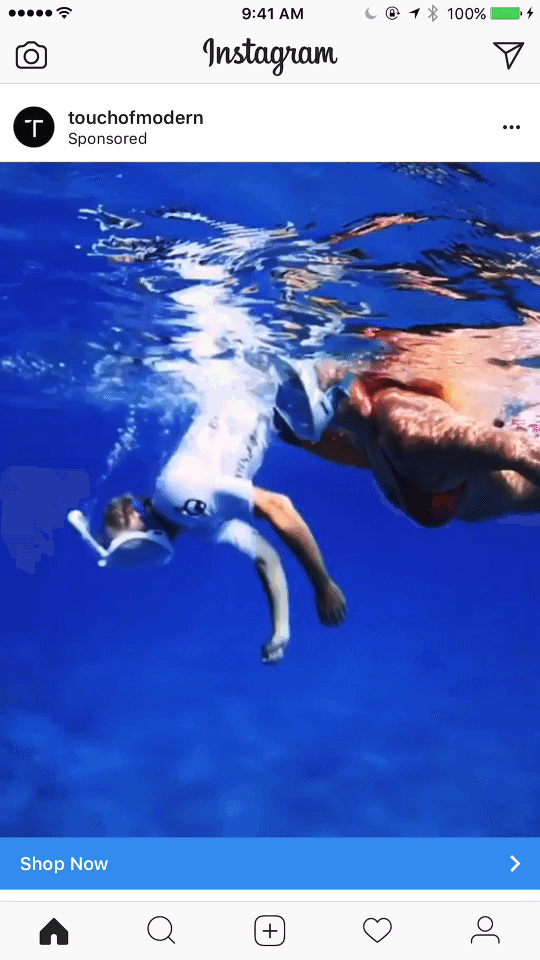
Ultimately, these content suggestions are rules made to be broken. You know your audience best and have the data on what they respond to. Don’t be afraid to try something new and surprising, as long as you keep key performance goals in sight.
How video contributes to growth
As people consume more and more video online, a strong video presence on Instagram will position your company particularly well. The rise of video dovetails with both the rise of mobile purchases and the popularity of the daily Stories format.
According to the 2017 State of Inbound report, 79% of internet traffic will be video by 2018.
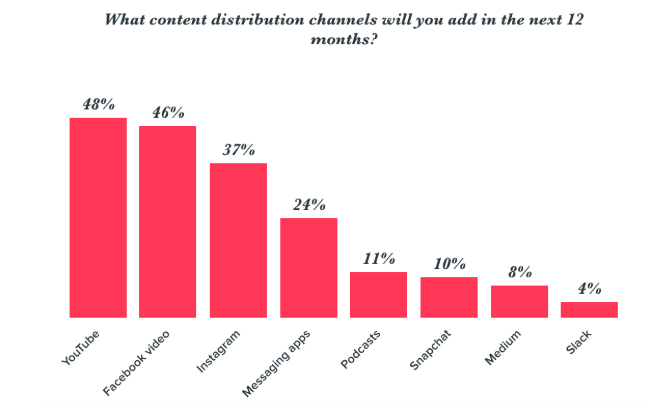
By learning how to do social video (and do it well) now, you’ll not only produce content that viewers are craving, but you’ll gain an advantage over companies that are slow to adapt and be well-positioned to adopt an advanced strategy when new video tools and products are released.
Since Stories were introduced in 2016, the format has boosted Instagram usage across the board. In August of 2017, TechCrunch reported that over half of the brands on Instagram had produced Stories posts, and increased the time spent on the app in all age categories.
According to search trends from Google, Stories may soon eclipse classic photo posts on Instagram.
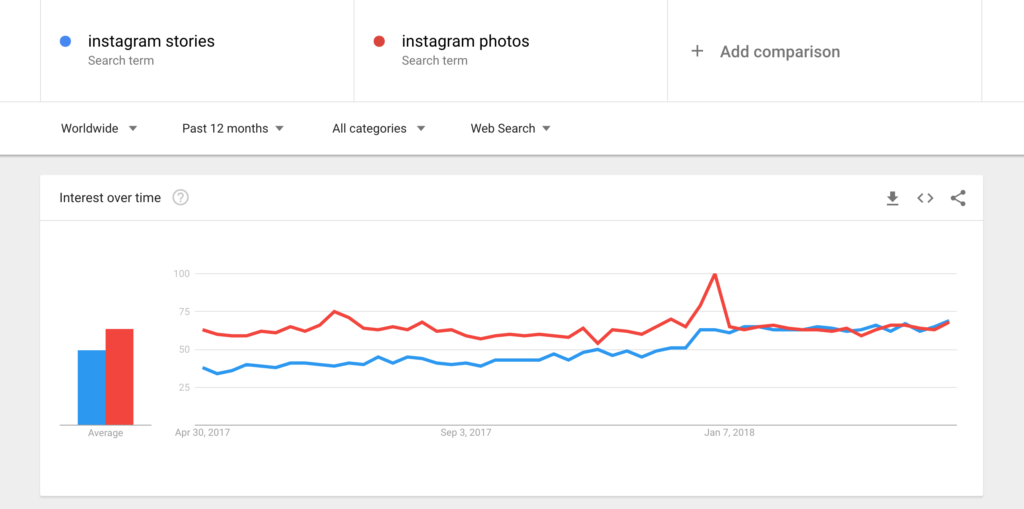
Stories fundamentally change the way users interact with each other and with brands on Instagram. If you want to hang out where your users are, then you need to create Stories. As more time is spent in the homescreen header, and less on feeds and profiles, producing Stories will be a smart and necessary move for engagement.
Last but not least, people are buying retail items from mobile devices more and more, making your Instagram conversions that much more valuable. According to this PwC consumer survey from 2010 to 2016, “purchases by personal computer (PC) fell from 27% to 20% over the six-year period. Tablet buying rose only slightly, from 8% to 12%. But mobile commerce more than doubled, from 7% to 17%—and will likely soon surpass PC-based buying.”
As people become more comfortable with the idea of buying from their phones, purchasing items directly from Instagram will become the norm. It’s not only convenient to shop while also looking at your friends’ photos, but the personalized nature of Instagram ads makes it likely that ads are relevant to each viewer’s tastes and interests. As you learn more about your audience’s behavior through ad testing and interactions, you can fine-tune your video content to maximize conversions.
Instagram is just one of several channels for video growth
While we focused on Instagram for this post, it’s just one of the fast-growing channels for video marketing. Facebook, of course, is closely related to Instagram and has similar formats and backend tools. YouTube, on the other hand, has a different audience, culture, backend, and formats. To make sure you’re getting the most ROI from your video marketing, start small and become a master of one channel before moving on to the next.
If a blank profile is intimidating, have no fear. It doesn’t take much time or budget to create original, eye-catching video content for Instagram. Check out Shakr’s templates to kick-start your next video.

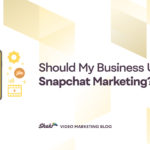
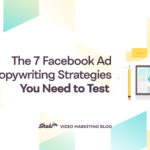
2 comments On Instagram Growth with Video is Easier than You Think
Pingback: Instagram Growth with Video is Easier than You Think – Just Internet Marketing ()
Pingback: Instagram Growth with Video is Easier than You Think – Next Level Digital Marketing ()
Comments are closed.